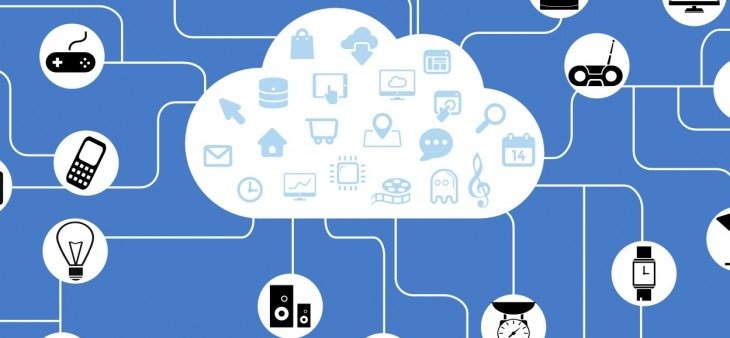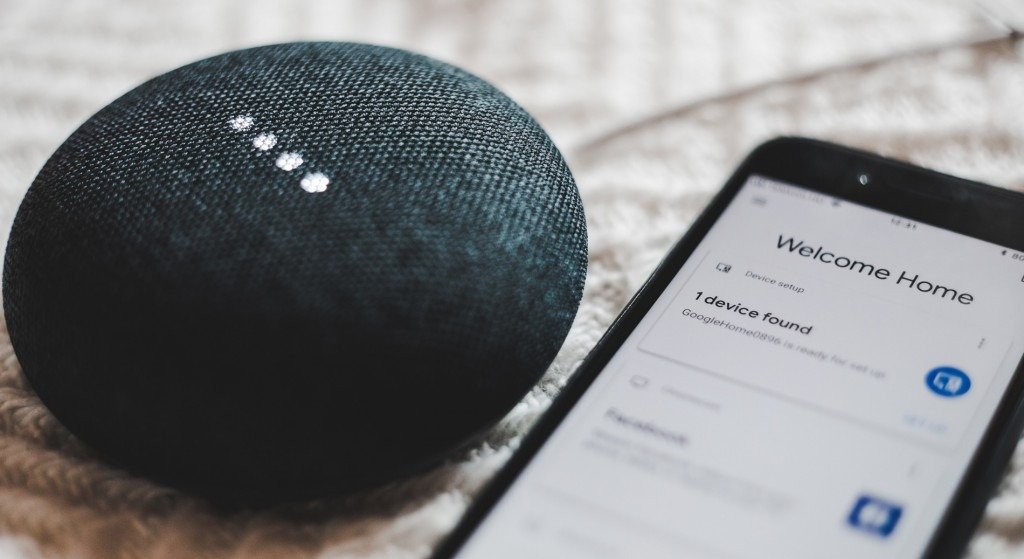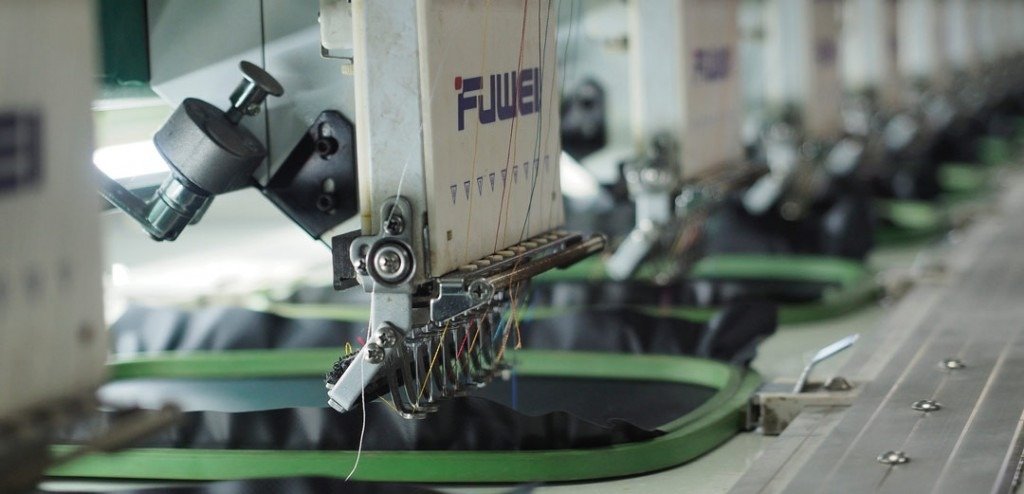
It’s been a long day at work.
Your to-do list has grown from 5 things to what feels like 500 things.
You’re finally home and can’t think of anything better than getting into bed.
You’re finally in bed except you’ve forgotten one thing.
The bedroom light is still on, and you can only be what feels like 100 miles from the light switch.
But it doesn’t have to be that way.
Thanks to the Internet of Things, there’s an app for that.
You turn the light off from your phone and resting can resume.
So, what exactly is the “Internet of Things” (IoT), I hear you ask?
To put it simply IoT are devices connected to the internet. Your everyday devices can now talk to each other through your network while being remotely monitored and controlled.
Most people can identify IoT applications through these devices:
- Amazon Alexa
- Google Home
- NEST heating
- Smart TV’s
- Smart lightbulbs
- Driverless cars
- Robots
- Automated industrial machines

History Of IoT
Technology has come far, and one could assume that IoT has only just become commonly recognised.
Well, that isn’t exactly true.
The first device was discussed as early as 1982.
One year before The Original Nintendo was released in 1983. IoT was already in the making.
Can you believe it?
Something as simple as a modified Coke vending machine paved the way for products such as Amazon’s Alexa.
Found in Carnegie Mellon University this vending machine would report back its inventory and whether the new drinks placed in the vending machine were cold or not before consumers purchased them.
Nothing’s worse than cracking open a warm Coke on a hot day.
Thank God for IoT!
Thanks to Bill Joy device-to-device communication started to gain traction due to his “Six Webs” framework.
Although, CISCO have estimated that IoT was “born” between 2008 and 2009.
This was because the people/things ratio increased from 0.08 to 1.84 in 2010.

Why Do These Devices Need To Collect Data?
Can you hear the voice in the back of your head?
But Alexa’s Amazon spies on people – it hears everything you say.
Why would we want to be spied on?
Truthfully, devices found within IoT transfer data for specific reasons. This has been argued that it could help the user and the wider economy.
Think about it for a minute.
You’re on your way home from your stressful day at work.
You’re unsure whether you have any milk.
You check the camera in your fridge.
(Yes, I just said camera in your fridge)
You can’t see any milk, so you stop at the shop on your way home and buy some more.
Now you’re tucked up in bed with a nice cup of tea.
Crisis averted.
Quite simply, if these devices couldn’t collect data, then it would be unlikely for there to be any benefit to consumers.
However, it’s not all about consumers you know.
IOT devices enable businesses to be more efficient in the way that they work.
For instance, manufacturers.
Manufacturers are now beginning to add sensors to their products resulting in data being transmitted back about how they’re performing. This way they’re able to identify failing components and swap them out before it causes damage.
And let’s not forget about the environment.
There’s a reason energy companies are shouting about smart metres.
The data they receive from your smart metre means that we can use less energy (and save money) and they become more efficient.
We’re all winning.

What Devices Can Be Connected To IoT?
But what devices does this apply to?
Any physical object can be made into an IoT device if it can be connected to the internet and controlled that way.
What about a PC?
A PC isn’t considered an IoT device as well as our trusty smartphones (even though they’re crammed with sensors)
Your smartwatch?
I can confirm this is an IoT device.
Now let’s get onto the interesting bit.
Most IoT devices are recognised through smart home devices.
These are devices such as:
- Lighting fixtures
- Thermostats
- Home security systems
- Cameras
These devices are all in the same ecosystem.
Making your life that little bit easier.
Say goodbye to large energy bills by automatically ensuring all lights and electronics are switched off.
But wait there is more.
Smart homes can also be used to aid the elderly and those with disabilities.
These home systems can use assistive technologies to accommodate an owner’s specific difficulties.
Voice control can help those with limited sight.
Alert system can be fitted directly to a cochlear implant.
Sensors can be worn to monitor for medical emergencies such as falls or seizures.
This is great, right?
Well, let’s get back to business.
In fact, let’s talk about “Enterprise IoT”.
Industrial And Enterprise IoT
(Also known as, Industrial IoT.)
This refers to devices used in business and corporate settings. By 2019 IoT will have up to 9.1 billion devices.
Some of the benefits include:
- Monitor their overall business processes
- Improve the customer experience
- Save time and money
- Enhance employee productivity
- Integrate and adapt business models
- Make better business decisions
- Generate more revenue
Let’s just consider one thing.
It’s great that these devices can help us.
But what if someone uses it for negative reasons? What then?
Privacy Gets A Bit More Confusing
According to Samsung, 7.3 billion devices need to be made secure by 2020.
Yikes, someone needs to get a move on.
More personal concerns surround consumer choice and ownership of data and how exactly this is going to be used.
There has been some talk about targeted ads becoming, well, a bit more targeted.
Let’s take you back to the fridge with the camera.
Your fridge is empty.
You know that, but you’re trying not to think about it.
But now local takeaway companies know.
Now you’re bombarded with takeaway ads and no food in the fridge.
Although this is great for the fast food industry.
Where does it leave consumers?
Keeping this balance is vital to consumers trust and loyalty.
IoT And Cyberwarfare
It’s important to note here that anything connected to the internet can be hacked.
Let me lift the veil for you.
Hackers are now actively targeting IoT devices such as routers and webcams because of the lack of security.
However, there’s more.
Industrial machinery connected to IoT can also be hacked.
What exactly does that mean?
For instance, hackers could hack into a driverless car and take control.
This is not ideal.
Hackers can also take control of sensors in power plants and cause the controllers to make the wrong decisions. The results of this would be catastrophic.
Which means countries are now beginning to plan their cyberwarfare strategies.
But fear not.
IoT is relatively safe. You’re not likely to suffer any major loss or damage through someone hacking your smart metre.
Or hacking your PC.
However, enterprise companies should always remain cautious.
Being vulnerable, they should take steps to keep their networks secure, always.

IoT And Cloud Computing
IoT generates vast amounts of data.
Most companies will choose to complete their data processing in the cloud.
This saves them building large amounts of in-house capacity.
Microsoft, Amazon and Google already offer their services on this.

IoT And Smart Cities
Let me guess,
You thought IoT services were predominately for businesses and smart homeowners?
Well, you’re about to be really surprised.
Introducing IoT combined with the real world.
Songdo, South Korea, is the first of its kind – a fully equipped and wired smart city.
70% of the business district is complete.
Most of the city is being wired and resulting in automation with little to no human intervention.
You thought that was it?
Smart buildings can also reduce energy costs.
This is done by using sensors to detect how many occupants are in the building. The temperature can then be adjusted automatically.
Afterall, there is nothing worse than sitting in a meeting room with 15 other people and no air conditioning.
And what about traffic in cities?
Well, IoT is about to be the answer to your problems.
IoT sensors such as streetlights and smart metres can help reduce traffic, conserve energy, monitor and address environmental concerns. While improving sanitation.
Let’s talk about the environment a little bit more.
Smart cities can help reduce waste and improve efficiency.
IoT collects data, in real time, from these cities and can highlight areas for improvement.
But what could IoT really do for the future?
From a consumer perspective, it can make your life much more automated and stress-free.
Say you have a meeting for the week.
If your car was connected to your phone it could plan the best route in advance.
Stuck in traffic? No worries. Your car could send a text to the other party notifying them that you could be late.
Not only would this improve safety. It would make your life increasingly stress free.
It’s important to understand that IoT allows for endless opportunities and connections to take place.
Many of these we can not even begin to comprehend.
Although there are some concerns. I think it’s safe to say IoT is leading us to an interesting and hopefully stress-free life.



